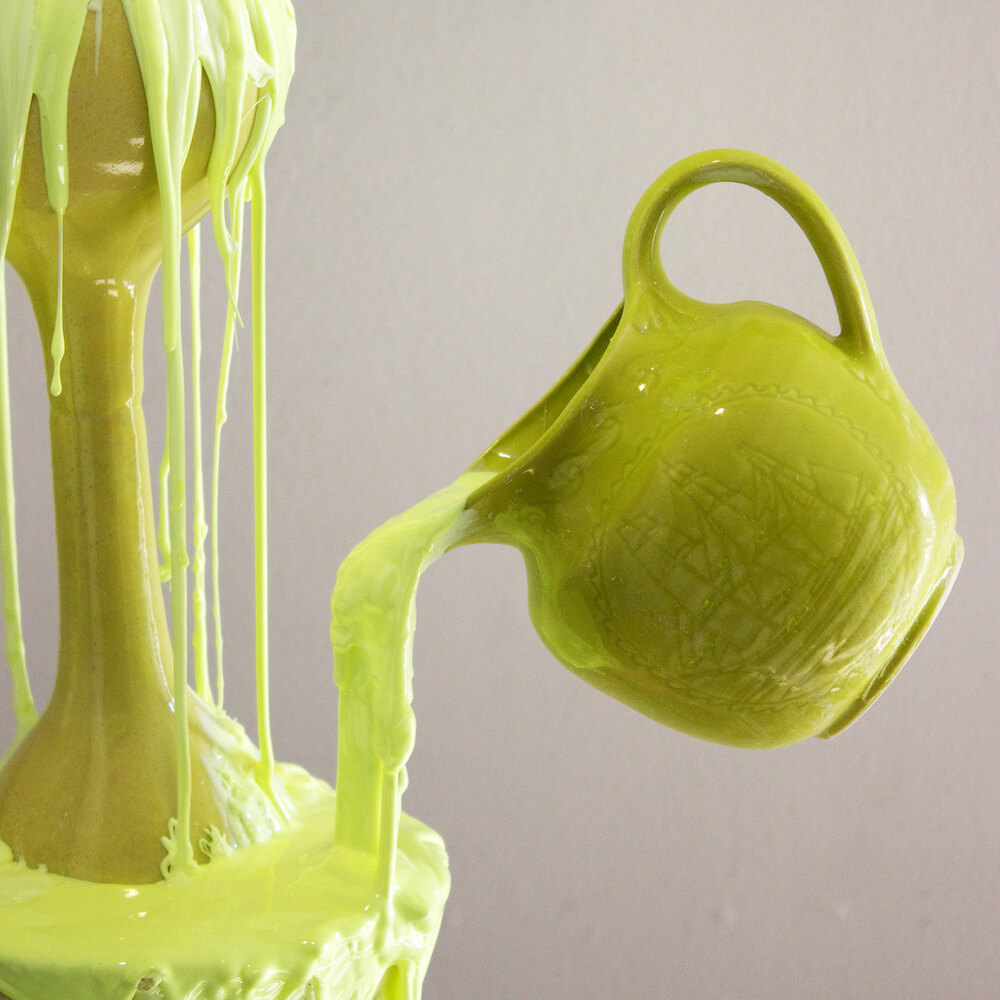We’re continuing our summer profiling the work of recent graduates in the field of contemporary ceramics. Today we have Joshua R. Clark, who received his MFA from the Cranbrook Academy of Art in 2015.
WOODSTOCK, New York — I sometimes hesitate to describe why certain kinds of art appeal to me. I worry that the associations I come up with could be perceived as insulting when read through a more serious lens. With that in mind, I promise that I’m sincere when I say that I like Joshua R. Clark’s work because a lot of it reminds me of cosmic bowling or a neon roller rink lit by black lights.
I like those places because, tacky as they seem, they’re immersive environments, full of light, sound and color that shut out the outside world and change its conventions. After an afternoon inside one of these places, you’ll be blinking your eyes in the parking lot, realizing that the normal world feels just as strange by comparison. Clark’s sculptures call up those associations for me, but they go a little further. If the spaces I described suspend conventions, his sculptures break them. They float unnaturally in the air, for one. Fundamental properties of matter change as gooey neon liquids are able to support weight piled in a column on top of them. They gleam like porcelain but it feels like I should be able to snap off a piece and eat it like candy. They’re products of a separate reality, something that touches ours just enough so that the differences seem all the more uncanny.
I’m not alone in this reading, either. In a commentary we posted here about a year ago, artist Anders Ruhwald said of Clark:
And while we are on the topic of process, Joshua Clark, Sean Michael Gallagher and Karin Karinson Nilsson all have been messing around with the very DNA of ceramics: melting, fusing and joining found objects into fluid accumulations that are oozing of all that is messy and seductive about molten material. The work seems to be stopped midway, frozen in a moment of transformation, neither here nor there… things that are found and then changed.
Sculptures like A Handle and Keepsakes tinker with the programming of the universe, but they’re also constructed environments. This is most apparent in Sunday Afternoon Island, which assembles found objects into what could be a little seaport town, the purple glaze and even the title working together to wrap the viewer into the narrative of the space.
Not everything Clark makes reminds me of a laser tag arena with gelatinous walls. Throw Your Stone has very muted colors, its standout pieces being the bright white plant and pineapple at the far end of the table. There’s still a surreal dialogue here, though. The ping-pong net and the title are like a challenge. There’s a paddle waiting for the viewer. It takes a moment to realize that the game is rigged. You’d be playing against a wall, positioned so that it cannot possibly lose the match. Also, your ping-pong ball is a lump of clay. Good luck getting serving that over the net.

Joshua R. Clark, Throw Your Stone, ceramic. Photographs courtesy of the artist. Click to see a larger image.
Clark’s sculptures have a sense of humor carried by just the right amount of chaos, frozen at a point where reality is more like a liquid and its physics are all glitchy. It’s a lot of fun and, like stepping out into the roller rink’s parking lot, conventional life feels just as strange by association.
Bill Rodgers is the Managing Editor of cfile.daily.
Do you love or loathe these works of contemporary ceramic art? Let us know in the comments.











Add your valued opinion to this post.